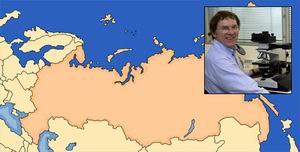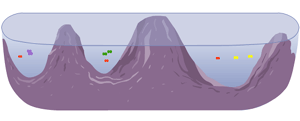Discovering and understanding
Lake Baikal, Russia
A unique lake
Lake Baikal is the largest, deepest and oldest lake in the world, holding about 20 per cent of all surface fresh water on Earth. Because of its size and varying depths, it has a huge variety of ecosystems within it.

Lake Baikal holds over 2,000 species of animals. These provide a unique opportunity for researchers to study the processes that lead to the emergence of new species.
Lake Baikal contains a range of small crustaceans called diacyclops. Geoff Boxshall, Museum scientist, has collected specimens in different parts of the lake, using diving equipment and submersible craft.
Learn more about:
 |
Collecting tools
Scientists use a wide range of tools to collect specimens. |
Diacyclops
Geoff brought the new specimens back to the Museum, and compared them with other crustacea in our collections. He found that most of the Lake Baikal species are endemic - they occur nowhere else.
Why should Lake Baikal contain so many species not found anywhere else?
Using Scanning Electron Microscope (SEM) images, Geoff found that different species had very different mouthparts, suggesting they have different feeding habits. Certain species also live at particular depths.
How do these two facts lead to an idea about how these diacyclops species evolved?
Learn more about:
 |
Looking
What is the Scanning Electron Microscope? What can it tell us about a specimen? |
Three basins
Lake Baikal has a very complex shape. During its 25-million-year history, three deep basins have formed in the lake. As the water levels in the lake have risen or fallen, the diacyclops in the different basins have been able to breed together, or have been isolated for long periods.
Lake Baikal has a very complex shape. During its 25-million-year history, three deep basins have formed in the lake. As the water levels in the lake have risen or fallen, the diacyclops in the different basins have been able to breed together, or have been isolated for long periods.

It is also the only freshwater lake known to have underwater 'reefs' of giant sponges. Geoff and his team found that some diacyclops have evolved specialised mouthparts for feeding on the sponges.
Often, changing food sources are a driving mechanism for species to evolve.